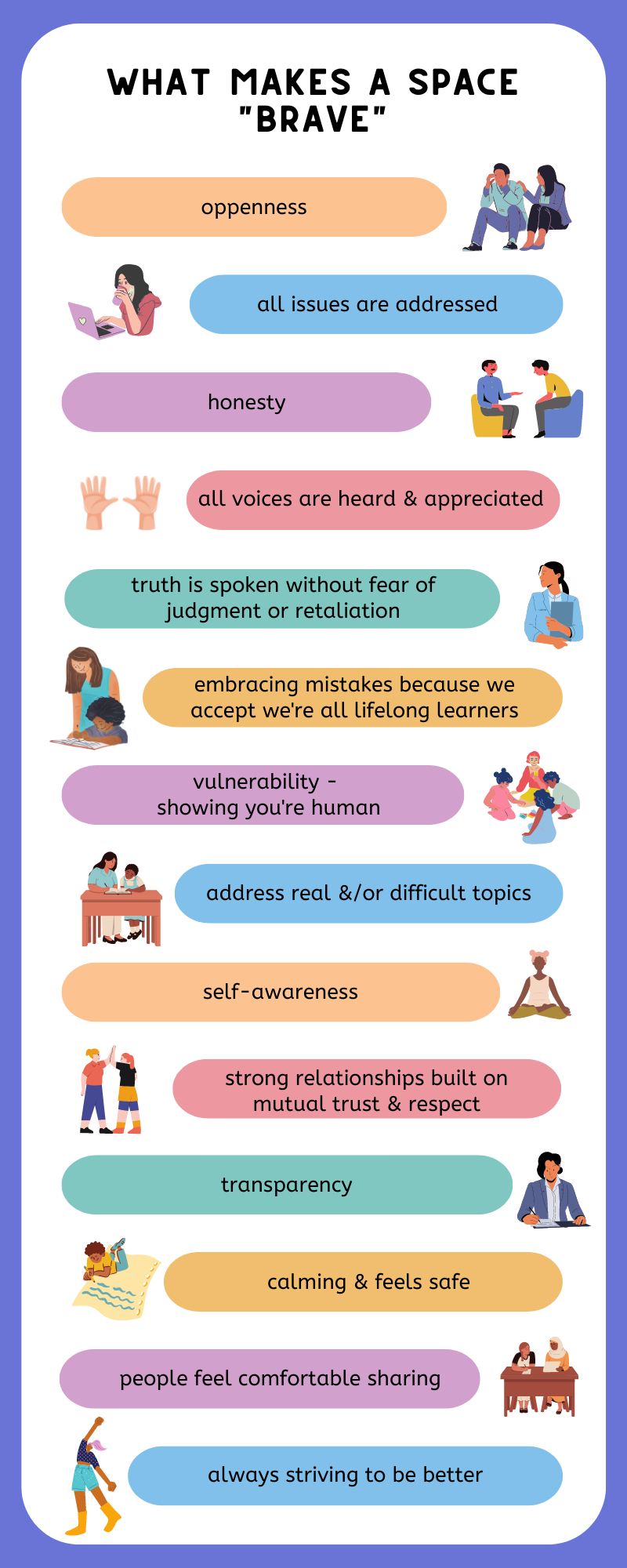
Creating Brave Spaces With Staff and Students: How to Build a Culture of Trust & Transparency
We have the right to start somewhere and continue to grow. We have the responsibility to examine what we think we know. We will not be perfect. This space will not be perfect. It will not always be what we wish it to be.
– Micky ScottBey Jones

INTRO
This resource was developed from a Portico Community Crowdsource Coffee conversation centered on creating brave spaces with staff and students to build a culture of trust and transparency.
Whether with staff or students, we avoid certain topics for fear of conflict or discomfort. When we avoid these tough conversations, however, it can lead to confusion, anger, and distrust. We also lose out on the opportunity to deepen connection and understanding.
How do we plan and structure these conversations? How can we harness the “heat” of disagreement and work toward shared solutions?
OBJECTIVES
- Understand what makes a space “brave” and evaluate your school’s culture
- Brainstorm ways to start transforming your school’s culture to be “brave”

TACTICS TO RAISE/LOWER THE HEAT
- Focus on the technical aspects
- Bring the conflict to the surface using data to drive the conversation
- Addressing the real problem by way of questioning
- Listening intently
- slowing the speaker down so you can write it down
- restate the person’s concerns
- Establishing a common structure for problem-solving
REFLECTION
- Think of a recent time when you were faced with a conflict or difficulty with a student, teacher, parent, or someone else in your school community. How did you approach the situation? How would you most like to handle similar situations?
- How can you plan and structure these conversations?
- How can you harness the “heat” of disagreement and work toward shared solutions?
- Review the “What Makes a Space ‘Brave'” list.
- Which are consistently present within your school’s culture?
- Which are lacking/missing?
- What can you do within the next week to start making your school more “brave”?
- In the next 3-6 months?
- During the next school year?
TIPS
- This is not an exhaustive list; feel free to make it your own with other methods you know to be successful
- Additional resources that were shared during the Crowdsource Coffee:











Responses